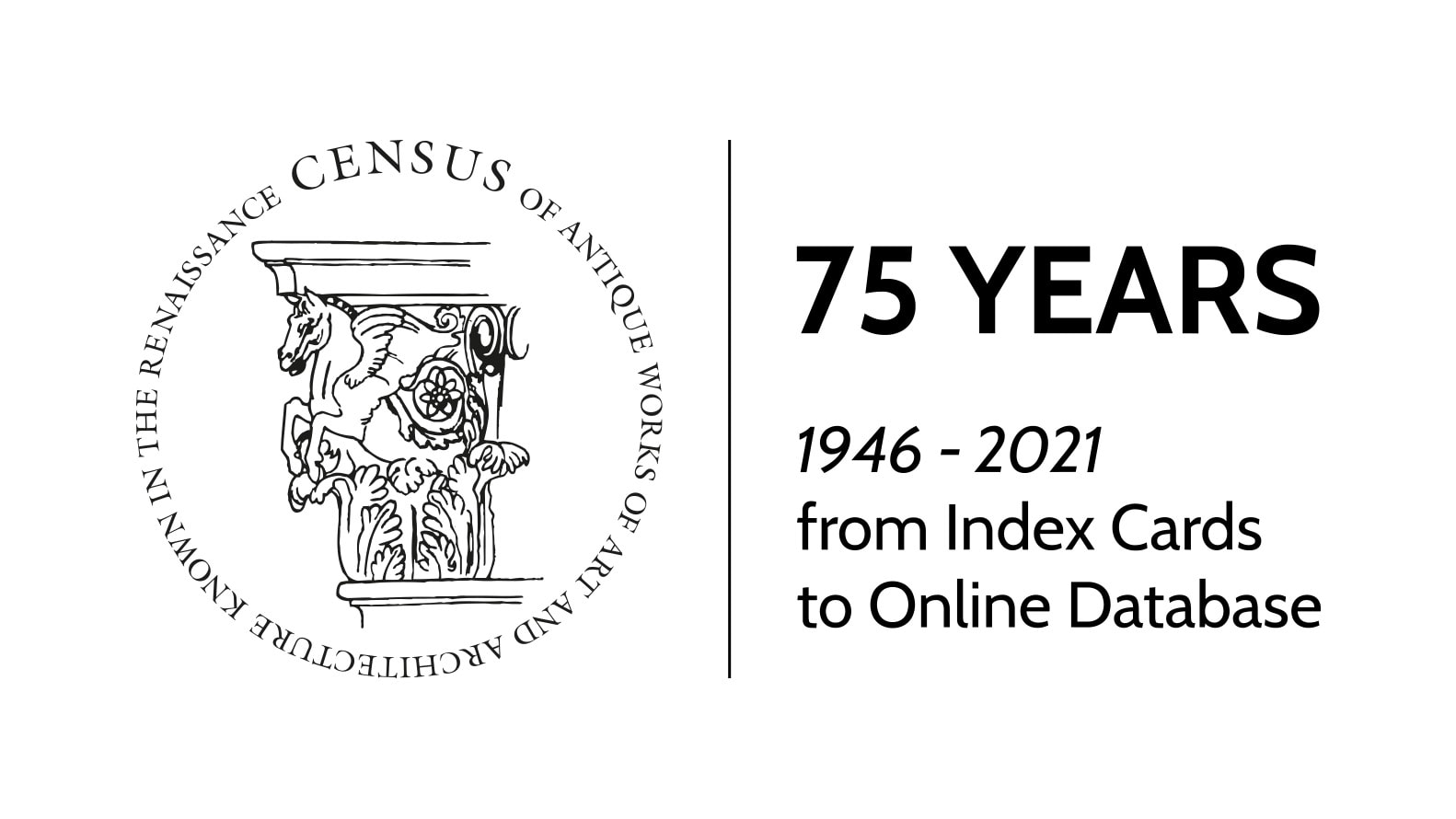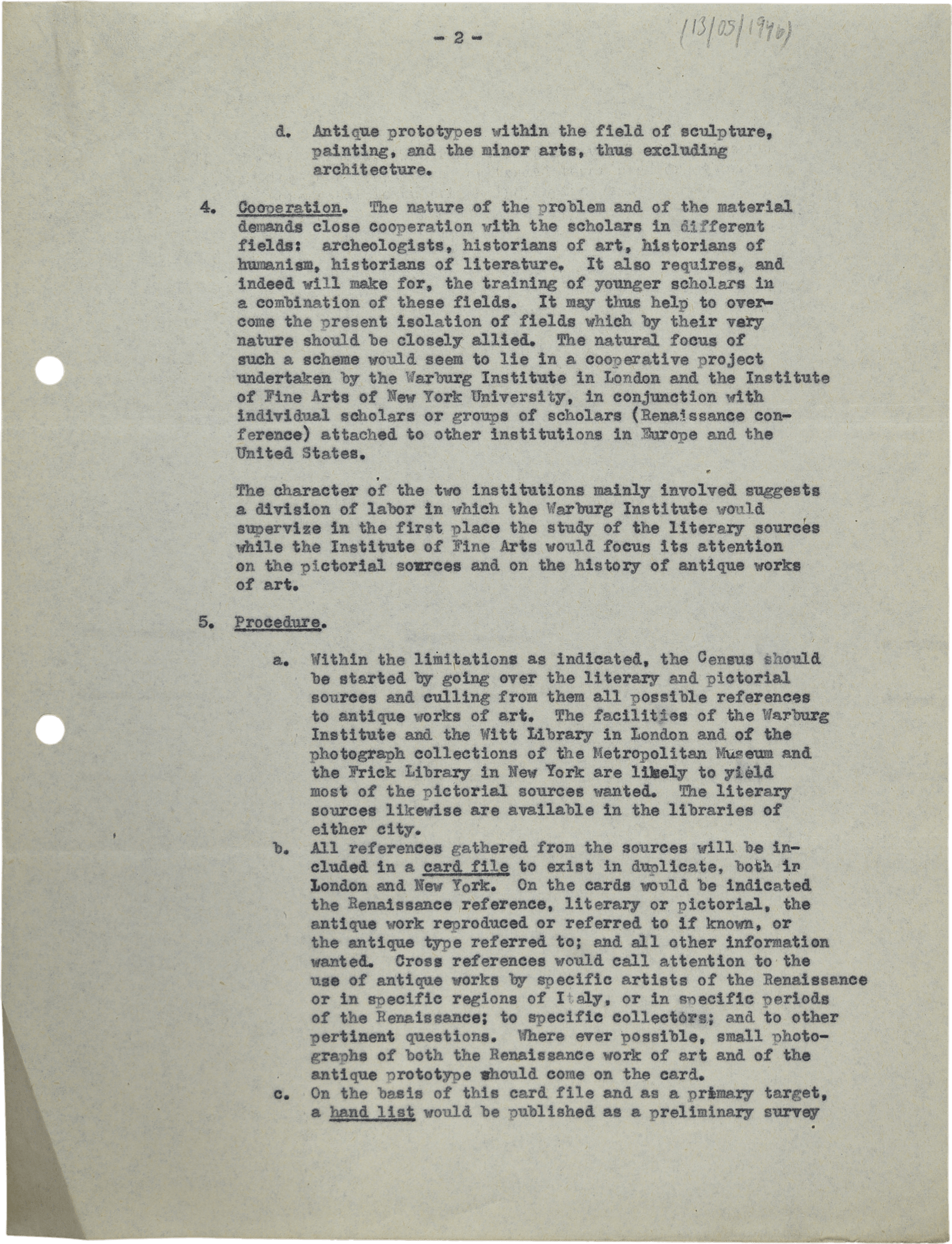

Warburg Institute Archive, GC, Richard Krautheimer to Fritz Saxl, 13 May, 1946, fol. 3
d. Antique prototypes within the field of sculpture, painting, and the minor arts, thus excluding architecture.
4. Cooperation. The nature of the problem and of the material demands close cooperation with the scholars in different fields: archeologists, historians of art, historians of humanism, historians of literature. It also requires, and indeed will make for, the training of younger scholars in a combination of these fields. It may thus help to overcome the present isolation of fields which by their very nature should be closely allied. The natural focus of such a scheme would seem to lie in a cooperative project undertaken by the Warburg Institute in London and the Institute of Fine Arts of New York University, in conjunction with individual scholars or groups of scholars (Renaissance conference) attached to other institutions in Europe and the United States.
The character of the two institutions mainly involved suggests a division of labor in which the Warburg Institute would supervize in the first place the study of the literary sources while the Institute of Fine Arts would focus its attention on the pictorial sources and on the history of antique works of art.
5. Procedure.
a. Within the limitations as indicated, the Census should be started by going over the literary and pictorial sources and culling from them all possible references to antique works of art. The facilities of the Warburg Institute and the Witt Library in London and of the photograph collections of the Metropolitan Museum and the Frick Library in New York are likely to yield most of the pictorial sources wanted. The literary sources likewise are available in the libraries of either city.
b. All references gathered from the sources will be included in a card file to exist in duplicate, both in London and New York. On the cards would be indicated the Renaissance reference, literary or pictorial, the antique work reproduced or referred to if known, or the antique type referred to; and all other information wanted. Cross references would call attention to the use of antique works by specific artists of the Renaissance or in specific regions of Italy. or in specific periods of the Renaissance; to specific collectors; and to other pertinent questions. Where ever possible, small photograhs of both the Renaissance work of art and of the antique prototype should come on the card.
c. On the basis of this card file and as a primary target, a hand list would be published as a preliminary survey